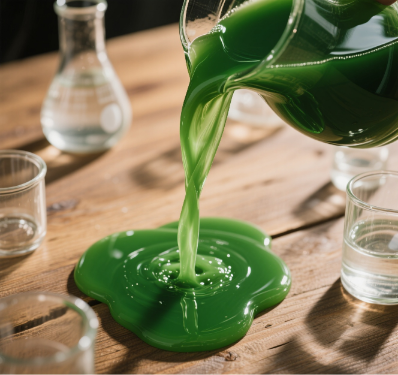Seaweed fertilizer refers to a type of fertilizer produced by extracting active components from marine macroalgae through chemical, physical, or biological methods. When applied to plants, it promotes growth, increases yield, and improves agricultural product quality.
Market Data:
-
2023 global seaweed fertilizer market: $314 million
-
Projected 2030 market: $563 million
-
CAGR (2024-2030): 6.4%
I. Characteristics of Seaweed Fertilizers
Premium seaweed fertilizers utilize advanced technologies to break algal cell walls, release contents, and concentrate seaweed essence, preserving:
-
Rich mineral and trace element content
-
Polyphenolic compounds and algal polysaccharides
-
Growth regulators including:
-
Cytokinins
-
Auxins
-
Cytokinin-like factors
-
Abscisic acid
-
Gibberellins
-
Ethylene
-
Betaine
-
Polyamines
-
Trans-N6-isopentenyladenine derivatives
-
ACC (ethylene precursor)
-
IAA and indole compounds
-
Key Advantages:
-
Natural Growth Substances – Stimulate non-specific active factors and regulate endogenous hormone balance
-
Superior to Chemical Fertilizers – Enhances growth, root development, and photosynthesis without side effects
-
Water Retention & Stress Resistance – Improves drought/cold resistance and reduces water/fertilizer requirements by ~30%
-
Pesticide Synergism – Acts as effective pesticide adjuvant (except with strong alkaline pesticides)
II. Production Methods
| Method | Description | Advantages | Limitations |
|---|---|---|---|
| Chemical Hydrolysis | KOH hydrolysis | Low cost | High temperature/alkali destroys active components |
| Biological Fermentation | Enzymatic degradation | Preserves bioactive substances | Higher production cost |
| Physical Extraction | Cold cell rupture | Maximum preservation of active components | Technologically demanding |
Note: Cold cell rupture technology maintains optimal bioactivity, followed by biological fermentation.
III. Raw Material Sources
Premium seaweed fertilizers use deep-sea wild macroalgae with higher bioactive content and lower heavy metals than cultivated kelp.
Premium Seaweed Species:
-
Ecklonia maxima (South Africa) – High growth hormone content
-
Ascophyllum nodosum (North Atlantic) – Rich in proteins and nutrients
-
Laminaria japonica (North Pacific) – Widely available for commercial use
IV. Advantages Over Traditional Fertilizers
-
Environmental Safety
-
Non-toxic and biodegradable
-
Improves soil structure and microbial activity
-
Reduces pesticide requirements
-
-
High Efficiency
-
Rapid absorption (hours after application)
-
Compatible with most agrochemicals
-
Excellent storage stability
-
-
Yield Enhancement
-
Documented yield increases: 8.6-36.5%
-
ROI: 1:8.3-225 across various crops
-
-
Quality Improvement
-
Enhances sugar/oil content
-
Improves fruit flavor, color, and shelf-life
-
-
Stress Resistance
-
Strengthens pest/disease resistance
-
Mitigates drought, waterlogging, and salinity stress
-
V. Development Prospects
-
Aligns with growing demand for organic/sustainable agriculture
-
Supports China’s green food and organic food production
-
Significant potential for domestic and international markets
-
Delivers economic, social, and ecological benefits









